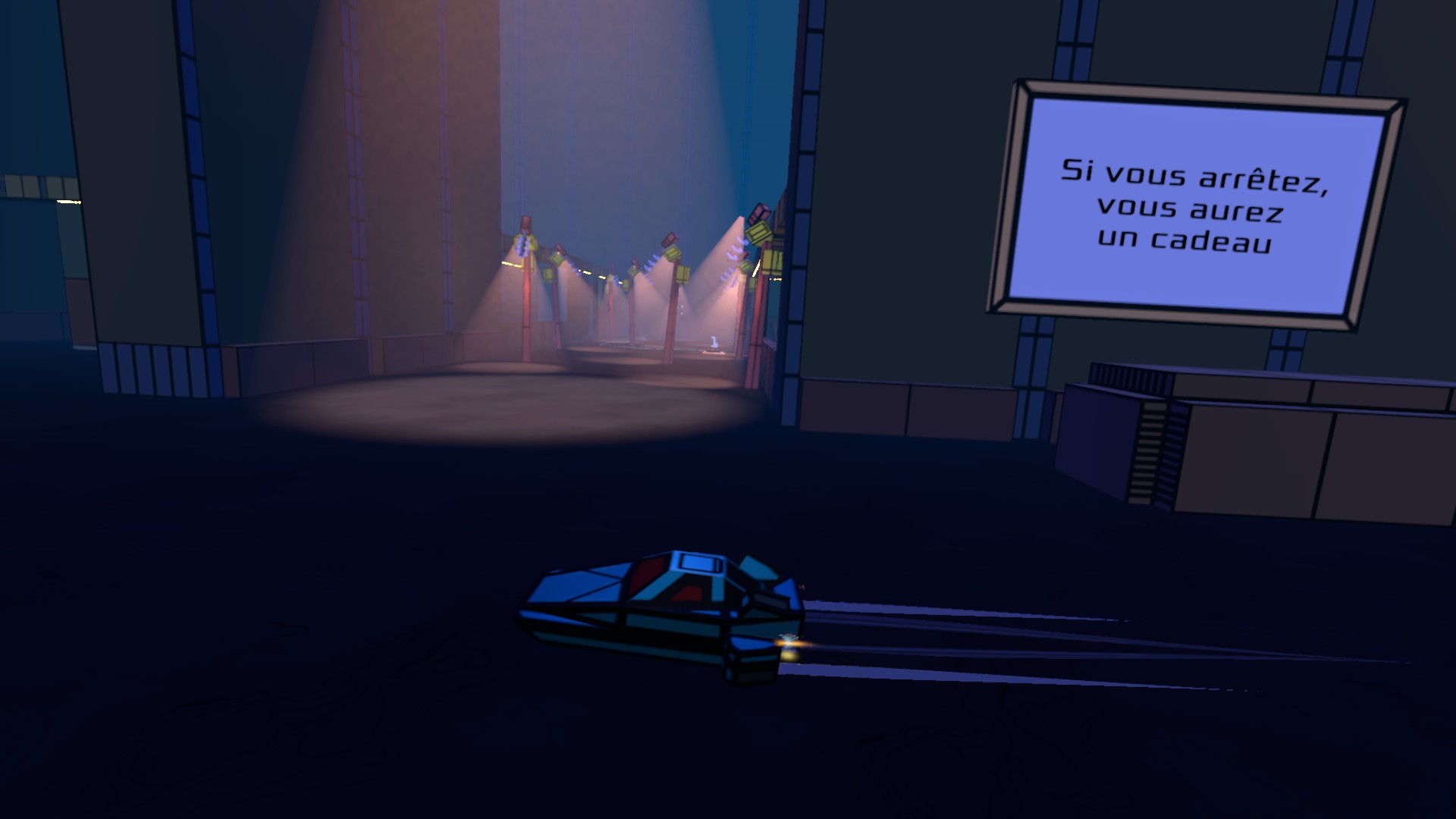
Level Design Workflow
I’m going to present, here, my level designer methodology which is based on iterations of experimentations, propositions, tests and thinking to find ideas and solutions of level design.
At a glance
- I define the theme according to the targeted experience
- I define the situations that support the theme
- I detail the key steps and situations to be found in the level
- I evaluate the constraints and possibilities defined by the gameplay with small prototypes
- I prototype, if necessary, the situations with pieces of blockout
- I structure the space according to the proportions of the blockout pieces
- I integrate and connect in detail the blockout pieces that correspond to the planned situations
- I iterate, test and improve until I am satisfied with the experience I am trying to achieve
Details
I took, as an example, a level I made for my game Volt Patrol.
Volt Patrol is a stealth driving game in which you have to escape from vehicles patrolling in order to find access codes allowing you to activate buttons opening the access to other levels of the game.
Ideas
To begin, I define, based on the chosen game experience, the main and memorable theme of the level which can be illustrated by a challenge, an atmosphere, a purpose, a context or a particular intensity.
In the Volt Patrol example level I chose, I wanted the theme to be about a lane full of enemy projectors that needed to be rushed through without being spotted.
In-game result
Along with that, I begin to consider how the level should fit into the overall levels to create and respect the overall rhythm of progression intended for the game.
Then I briefly write down situations that can support the gameplay and the theme, but I don’t limit myself too much in my ideas. Depending on the scope of the level, some ideas will be discarded and others will be refined. And, during this sorting, I evaluate if one of the ideas is promising and if it would be worthwhile to work on it despite the work it requires.
Once the most interesting and feasible ideas have been shortlisted, I start looking for references that will serve as inspiration and starting point for the construction of the level.
Then, based on the ideas found and with the help of descriptions or sketches, I list all the steps and situations to be experienced in order to make them work together and fit seamlessly into the level.
Prototyping
Ideally, at this stage I don’t directly develop the ideas defined beforehand. Instead, I make small blockouts that serve as modules to evaluate the constraints and possibilities defined by the gameplay. This is also an opportunity to start creating a kit of rough assets that will evolve throughout the iterations.
Once the limits of the gameplay are perceived thanks to the previous modules created, I prototype, if I need to, pieces of blockout synthesizing the previously selected ideas.
This is done in order to produce prototypes of key recurring patterns.
The main objective here is to obtain playable situations to test how they feel.
The feedback obtained in this way will give me the opportunity to identify the problems to solve and anticipate in order to consolidate the foundations of the game experience.
When the pieces of blockout created become convincing enough, I start the realization of the blockout of the complete level.
I start by organizing the level with basic shapes that have the proportions of the blockout pieces. This way I create the relationship between the different parts of the level while arranging the space.
When I feel the structure is good, I include the planned situations in details, with clues and landmarks to guide the action and scripted passages so that everything flows and connects naturally. Then, I add variations to the blockout to link and diversify the sections in order to renew the feeling in game.
And, from that point on, the goal of my work is to succeed, through testing and iterations, in delivering the intended experience with a fun and consistent traversal.
Level in-game:


